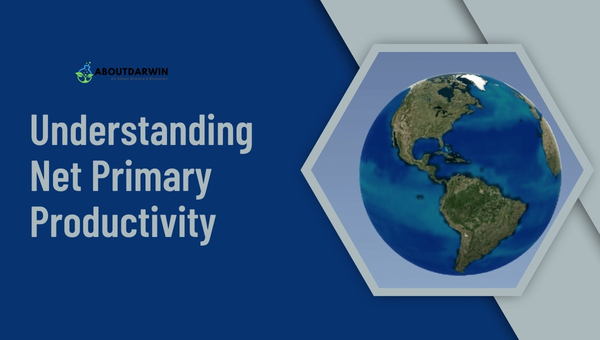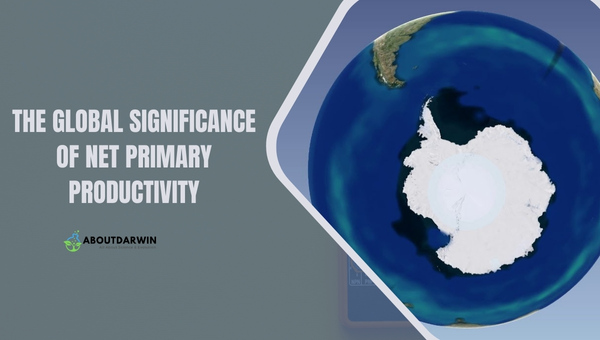Physical Address
304 North Cardinal St.
Dorchester Center, MA 02124
Net Primary Productivity (NPP) serves as a fundamental measure of the Earth’s ecological health, reflecting the total organic matter produced by plants after accounting for their respiration.
This critical metric not only indicates the capacity of ecosystems to support life but also highlights the intricate balance between carbon absorption and release. As climate change intensifies, understanding NPP becomes increasingly vital, revealing insights into ecosystem functionality and biodiversity.
The implications of NPP extend beyond mere numbers; they resonate with our responsibility to protect and sustain our planet’s diverse habitats.
Contents
Net Primary Productivity (NPP) is a crucial ecological concept that quantifies the energy available to support life within an ecosystem.

It represents the difference between the total energy captured by photosynthesis (Gross Primary Productivity, GPP) and the energy used by plants for their own respiration.
NPP is essential for assessing ecosystem health, productivity, and the potential for supporting various forms of life. This metric not only informs us about the efficiency of energy transfer in food webs but also highlights the impact of environmental factors on biomass accumulation.
Net Primary Productivity (NPP) is defined as the rate at which energy is accumulated in the form of biomass by autotrophs, primarily plants, after accounting for energy lost through respiration.
Mathematically, it can be expressed as:
NPP = GPP – R
Where GPP is Gross Primary Productivity and R represents the respiratory losses of plants.
NPP is a critical measure because it indicates how much organic matter is available for consumption by herbivores and other consumers in an ecosystem.
NPP varies significantly across different ecosystems and is influenced by several factors, including:
NPP serves as a fundamental indicator of ecosystem productivity. It reflects the efficiency of energy capture and storage within an ecosystem, which is vital for understanding food web dynamics.
Ecosystems with high NPP, such as tropical rainforests and wetlands, support diverse biological communities due to their abundant resources. Conversely, ecosystems with low NPP, like deserts, are limited in their capacity to sustain life.
Let’s take a look at some NPP data from various ecosystems in a table:
| Ecosystem | NPP (grams/m²/year) |
|---|---|
| Tropical rainforest | 2,200 |
| Temperate deciduous forest | 1,200 |
| Grassland | 900 |
| Boreal forest | 800 |
| Tundra | 140 |
Net Primary Productivity (NPP) is a crucial ecological concept that quantifies the energy captured by primary producers, primarily plants, through photosynthesis.
It represents the amount of biomass or carbon that remains after accounting for the energy used in respiration by these producers. NPP is essential as it not only reflects the health of an ecosystem but also indicates the potential energy available to consumers within that ecosystem.
NPP is influenced by various abiotic factors such as light, temperature, water availability, and nutrient levels, making it a key indicator of ecosystem productivity and sustainability.
Key Points about NPP in an Ecosystem:
NPP is essential for conservation efforts and sustainable management of natural resources, as it directly relates to the productivity and health of ecosystems worldwide.
Net Primary Productivity (NPP) is a crucial ecological concept that measures the rate at which energy is stored in the form of biomass by primary producers, primarily plants, after accounting for the energy they use in respiration.

NPP is significant as it serves as the foundation for food webs and ecosystems, influencing biodiversity and ecosystem services.
NPP helps in assessing the health of ecosystems and their ability to sustain life, particularly as human activities and climate change exert pressure on natural resources.
These aspects of NPP is essential for managing natural resources sustainably and addressing challenges posed by environmental change.
Here are some facts related to global NPP values:
| Region | NPP (gC m−2 yr−1) |
|---|---|
| Oceania | 900 – 2000 |
| Eurasia | 500 – 2000 |
| Africa | 500 – 2000 |
| North America | 500 – 2000 |
| South America | 500 – 2000 |
Source: Field, C. B., Randerson, J. T., & Malmström, C. M. (1995). Global Net Primary Production: Combining Ecology and Remote Sensing. Remote Sensing of Environment, 51(1), 74-88.
The global significance of Net Primary Productivity spans from its role in regulating climate change to shaping ecosystems and reflecting the impact of human activities.
NPP and working towards its conservation is crucial for maintaining the balance of life on Earth and the overall health of our planet.
Net Primary Production (NPP) is the biomass generated by primary producers, calculated as gross primary productivity minus plant respiration, crucial for ecosystem energy transfer.
Gross Primary Productivity (GPP) is the total organic matter produced during photosynthesis, while Net Primary Productivity (NPP) is GPP minus respiration losses, representing the biomass available for consumption by heterotrophs.
Gross Primary Productivity (GPP) represents the total energy produced by photosynthesis in an ecosystem, while Net Primary Productivity (NPP) is the energy remaining after subtracting energy used for respiration. NPP indicates the energy available for consumers.
Gross Primary Productivity (GPP) is the total energy produced by photosynthesis, while Net Primary Productivity (NPP) is GPP minus energy lost to plant respiration, representing usable biomass in ecosystems.
Net Primary Productivity (NPP) serves as a critical indicator of ecosystem health and function. It reflects the rate at which plants convert solar energy into biomass, influencing food webs and carbon cycling.
High NPP areas, such as tropical rainforests, support diverse species and contribute significantly to global oxygen production. Conversely, regions with low NPP may indicate environmental stress or degradation.
Monitoring NPP is essential for understanding ecological changes and guiding conservation efforts, ensuring that ecosystems continue to thrive in the face of climate change and human impact.